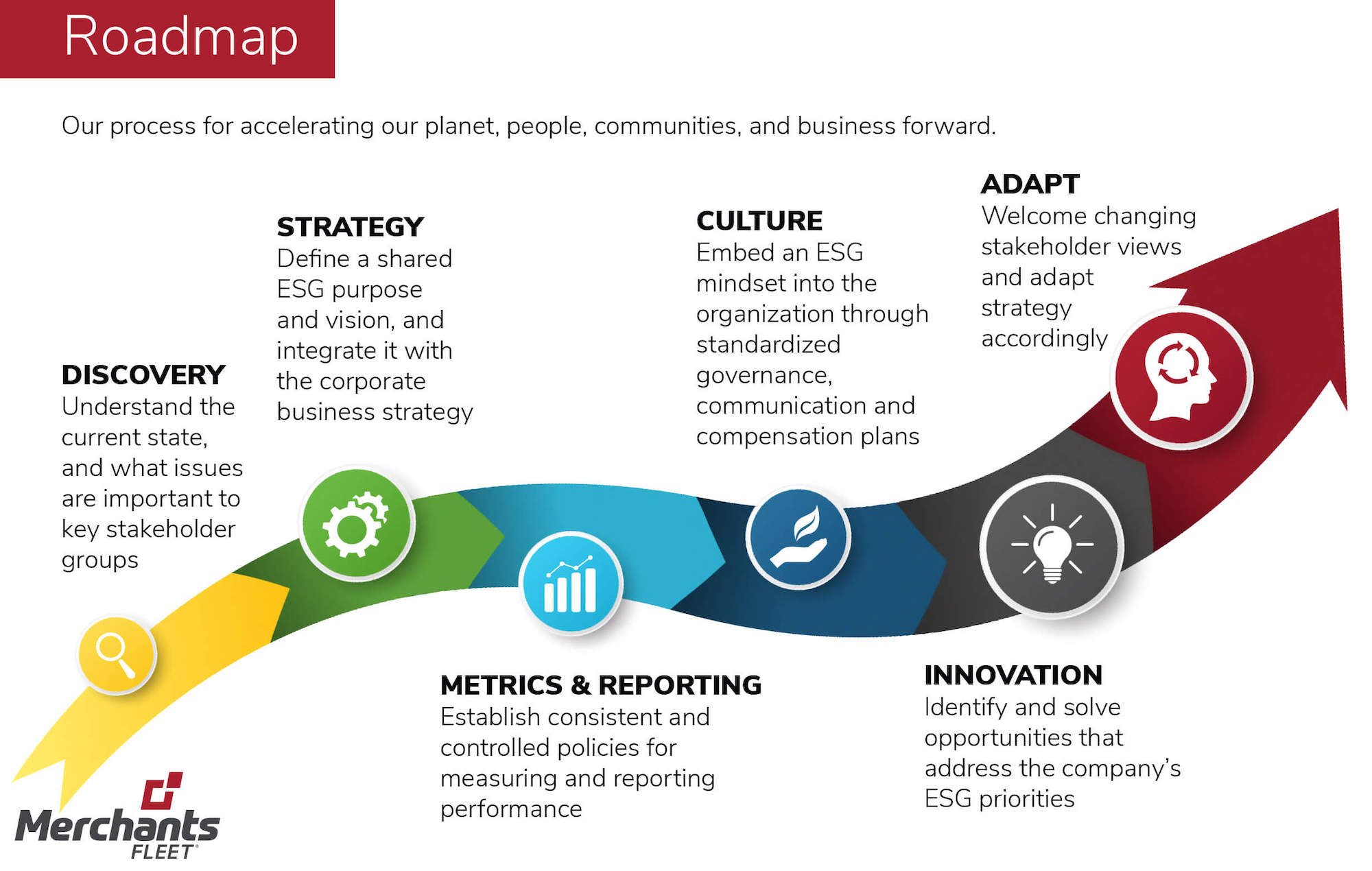What Is ESG — And Why Is It Important to Fleets?
In today’s global economy, more and more consumers and employees are looking to partner with — and work for — companies and organizations that are committed to sustainability and diversity.
While profitability has typically been a measure of a company’s success, consumers and employees are increasingly quantifying a business in terms of how it treats the environment, its people, and the surrounding community.
That’s where the concept of environmental, social, and governance (ESG) comes in. This important acronym is growing in popularity across all industries, including fleet management, but what exactly does it mean, and how is it important to your business? And how can you implement an ESG strategy if you don’t have one?
We’ll answer all of those questions, and more, in this comprehensive ESG guide.
What Is ESG?
ESG — environmental, social, and governance — is the concept of creating long-term enterprise value by focusing on environmental and social causes. This acronym is often associated with a company or organization’s goals and culture; it includes anything related to the planet, community, and philanthropic causes.
- Environmental — ESG goals will likely differ depending on the company and organization, but in general, the environmental aspect includes everything from carbon reduction and limiting energy use to addressing waste reduction, pollution, and land conservation.
- Social — The social component often refers to people and community. This could mean the area in which the company is physically located, but also employees, consumers, and any others who are directly or indirectly impacted by the company’s goals, culture, and actions. Social goals could include implementing a health and wellness program for employees with discounts and incentives; diversity, equity, and inclusion (DEI) and gender equity programs; volunteering; partnering with local community groups; sponsoring events; and making donations to important causes.
- Governance — This refers to the guidance and policies that inform responsible enterprise level decision-making and resilience. Beyond meeting an initiative, this includes the entire top-down process.
The Importance of ESG to Fleets
You might not notice this while driving, but one-in-five vehicles on the road belong to a fleet. As the transportation sector generates 27% of GHG emissions in the United States, this presents a monumental opportunity for businesses to create impactful ESG policies.
When thinking about ESG goals in terms of fleets, most center around the vehicles themselves – which includes reducing carbon emissions and using sustainable fuel sources to power your fleet.
Having ESG goals demonstrates to your consumers, employees and potential applicants, and investors that your company is forward-thinking, unafraid of embracing change, and committed to sustainability, diversity, community, and important causes.
How EVs Can Help Fleets Meet ESG Goals
Implementing electric vehicles is one of the quickest, easiest, and most effective ways for companies and organizations to help meet their ESG goals. Benefits include:
- Reducing tailpipe emissions
- Supporting clean energy initiatives
- Assisting in meeting federal mandates
- Improving community health via reduced air and noise pollution
EVs also have the power to positively impact the health and wellness of local communities, especially those located near shipping routes that are often subject to increased truck traffic. The increased tailpipe emissions from gas-powered vehicles can contribute to adverse health effects such as asthma and other upper respiratory conditions, disproportionately impacting minorities and lower income households relative to other populations and income levels.
How to Develop an ESG Strategy
The first step is to develop a company-wide vision that goes beyond ESG. For example, at Merchants Fleet, our ethos is to do well by doing good for our planet, our people, and our community. Here are some question to consider:
- Where is your company or organization headed and why?
- Where do you see your company or organization in 10 years? What does that look like in terms of goals, objectives, products, services, employees, capacity, etc.?
- What metrics will you use to determine whether you are meeting your goals and objectives?
A successful ESG strategy depends on implementing and fostering an honest, truthful culture with buy-in from all levels. It should not be a leadership-only type of mentality, but one that is embraced by all employees at every level.
Most importantly, ESG goals need to be supported by visible action — in other words, companies cannot just spout talk of sustainability and diversity because it’s what their consumers and employees want to hear. A successful ESG strategy shouldn’t just live on paper.
Connect With Merchants Today to Help Meet Your ESG Goals
Merchants Fleet is on a mission to enable the movement of people, goods, and services freely and responsibly. ESG has always been at the core of what we do, and our fleet management experts are ready to answer your questions about how electric vehicles can help you achieve your ESG goals. Contact us today to get started.
We also invite you to read our most recent ESG Report for more information about our own sustainability and diversity efforts.





